
After a good workout, many athletes look in the mirror to see that their face is bright red. An exercise-induced red face, writes Sabyasachi Sircar in "Principles of Medical Physiology," is usually normal. Scientific research indicates that some athletes are more prone to visible, exercise-induced red faces as a result of genetic, behavioral and environmental conditions.
Red Face Definition
In "Principles of Medical Physiology," Sircar explains that an exercise-induced red face occurs due to the dilation of the small capillaries, or blood vessels, that are located just under the surface of your skin. As the capillaries swell, they press toward the skin's surface and become visible. This dilation functions to transfer internally created heat, a by-product of exercise, through the blood stream to the skin's surface, states Sircar. At the skin's surface, the heat transfers away from the body.
Red Faces in Well-Trained Endurance Athletes
Ricardo G. Fritzsche and Edward F. Coyle, in "Cutaneous Blood Flow During Exercise is Higher in Endurance-Trained Humans," studied blood flow through the skin of trained and untrained athletes. The scientists found that, during a bout of intense cycling, trained athletes exercised at a higher metabolic rate, or created more internal body heat, than their untrained counterparts, yet they possessed the same core body temperature. Fritzsche and Coyle determined that the trained athletes were able to release more core heat by increased blood flow through skin capillaries. As a result, trained athletes may have a redder face than untrained athletes.
Red Faces and Skin Color
As you survey the skin color of an average group of people, you will notice variations in skin pigmentation. Skin pigmentation, when dark enough, can disguise a red face derived from exercise. That is, a dark-skinned individual may have the same degree of reddened facial skin as a person with lighter skin, but his skin's pigment might mask it.
Red Faces and Chilblains
According to MayoClinic.com, blood is diverted to the human body's core and away from the skin when the body experiences cold temperatures. This can cause a decrease in the skin's temperature. Chilblains, an inflammation of the skin's capillaries, may form if cold skin warms too rapidly. This inflammation can turn the face red for a period of time following the warming event. If you have ever gone for a run in the winter with cold cheeks, then realized later that your cheeks were flushed, you may have had chilblains. Chilblains are generally of little medical concern, says MayoClinic.com.
Other Causes of Red Face
Cure Research explains that there are many other causes of a red face that are not related to exercise. A red face could be a symptom of stress, social anxiety disorder, rosacea, alcoholism or circulatory disorders, according to Cure Research. While an exercise-induced red face is generally normal, visit a physician if you believe your red face is occurring for another reason.
Related Articles
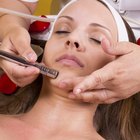
Fraxel Laser Treatment Dangers

Swollen Lymph Nodes in Horses

How to Tell If Someone Is Blushing?

How to Look More Masculine in the Face

How to Shave Skin Moles

How Does Facial Hair Grow Get Lighter ...
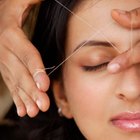
Side Effects of Eyebrow Threading

Long-Term Health Risks of Laser Hair ...

What Are the Dangers of Photofacials?

What Is the Downtime for a Photofacial?

Is a Sauna Good for Healing Scars?

Bromelain & Bruising
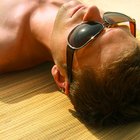
What Are the Dangers of Men's Brazilian ...

Risks of Facial Fillers
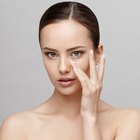
Hydroquinone & Dark Circles

Thigh Rash from Football Pads

Long-Term Effects of Being Molested As ...
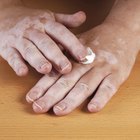
Black Pepper Oil for Vitiligo
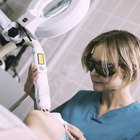
Laser Treatment for Face Wrinkles

Can LED Light Get Rid of Brown Spots on ...
References
- "Principles of Medical Physiology"; S. Sircar; 2008
- Journal of Applied Physiology: Cutaneous Blood Flow During Exercise is Higher in Endurance-Trained Humans
- Cure Research: Red Face
Writer Bio
Meghan Hicks is an outdoor educator and running coach who began writing in 2009. She is a contributor to the iRunFar website, among others. She holds a Master of Science in resource interpretation from Stephen F. Austin State University and a Bachelor of Science in geology from Beloit College.
Photo Credits
Jupiterimages/Goodshoot/Getty Images